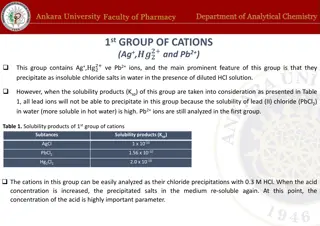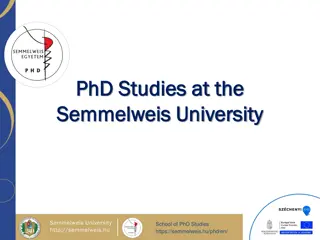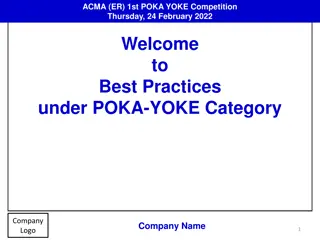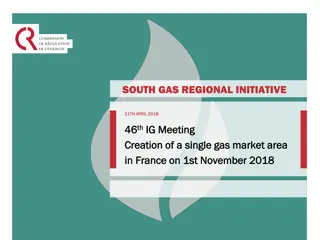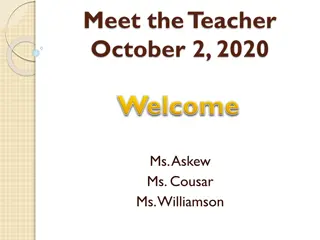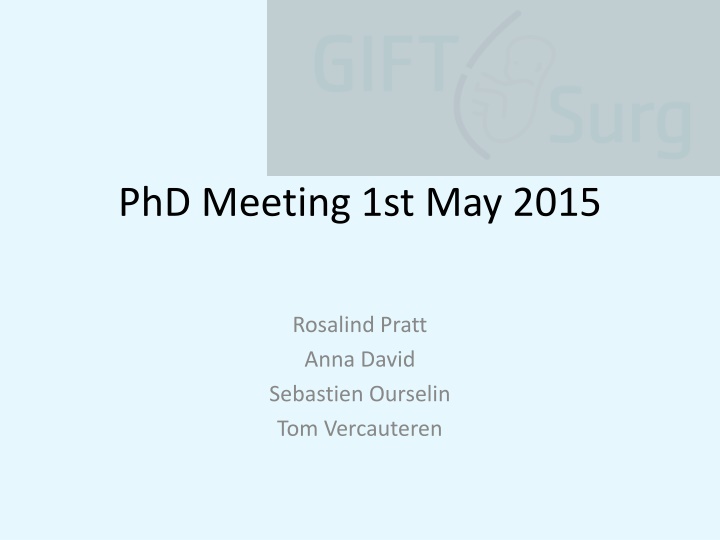
Improving Clinical Outcome in Twin-to-Twin Transfusion Syndrome (TTTS): Research Insights
Explore the latest research insights on improving clinical outcomes in Twin-to-Twin Transfusion Syndrome (TTTS), covering topics such as long-term outcomes, fetal brain MRI findings post-laser treatment, ethical considerations, and neurodevelopmental implications. Discover the significance of DWI in detecting cerebral damage post-laser treatment and the need for larger cohort studies for better prenatal assessment and patient follow-up in TTTS cases.
Download Presentation

Please find below an Image/Link to download the presentation.
The content on the website is provided AS IS for your information and personal use only. It may not be sold, licensed, or shared on other websites without obtaining consent from the author. If you encounter any issues during the download, it is possible that the publisher has removed the file from their server.
You are allowed to download the files provided on this website for personal or commercial use, subject to the condition that they are used lawfully. All files are the property of their respective owners.
The content on the website is provided AS IS for your information and personal use only. It may not be sold, licensed, or shared on other websites without obtaining consent from the author.
E N D
Presentation Transcript
PhD Meeting 1st May 2015 Rosalind Pratt Anna David Sebastien Ourselin Tom Vercauteren
Agenda Review Ethics TTTS ideas
Review Feedback from presentation/review (second draft)? IFMSS abstract submitted
Ethics IRAS nearly done ?change to include healthy volunteers Pt info leaflets done Developing generic Fetal MRI information leaflet
Improving clinical outcome in TTTS ?Survival ?Long term outcome neurodevelopmental, other health related outcomes What literature is there on MRI changes TTTS/Laser and their clinical implications? ?Role of functional imaging No long term outcome studies including MRI/DWI imaging (that I ve found so far)
Recipient dilated renal collection system DWI brain lesions after laser Recipient - Cardiomegaly/ hydrops TTTS MRI findings in literature Both - Cerebral malformations PVL, IVH Recipient - Cerebral venous sinus enlargement Recipient - Lung lesions CCAM Donor - Hypoplastic lungs
TTTS Long term outcome studies Lopriore 2009 212 TTTS pregnancies treated laser 30% mortality 18% neurodevelopmental impairment RF increased GA at time of laser, Increasing Quintero score, Prematurity, low birth weight Eurofetus 12% neurological morbidity Metal analysis cerebral palsy 3-12%, neurodevelopmental impairment 7-18%
DWI fetal brain T2 and DWI of fetal brain shortly after laser N=30. MRI 1-5 days post laser. 6 had bleed, 3 had diffusion ischaemic changes With iscahemic changes, 1 died, MRI showed remaining 2 had brain atrophy 28-32 weeks compatible with infarct both TOP. Conclusions DWI can demonstrate cerebral damage immediately after FLC. Larger cohorts are needed to determine the role of fetal MRI in the prenatal assessment and follow-up of patients with TTTS.
Laser to MRI (Days) Gest laser Gest MRI Outcome Recipient Outcome donor Recipient MRI Donor MRI Notes Slightly small brain and slightly immature in gyral development. No focal lesions. 24+4 27+5 22 NAD Smaller calvarial size and brain volume. No infarct/haemorrhage. 18+3 22+2 27 NDA 18+5 19+0 25+0 24+1 44 36 NAD NAD NAD NAD DCTA triplets - triplet 1 singleton, 2 and 3 MCDA. Triplet 1 - NAD MRI 23+4 28+5 36 RIP NAD RIP 25+3 17+3 25+3 24+4 31+3 50 42 NAD NAD NAD NAD TAPS 32+4 31+2 - ex donor anaemic and hydropic - delivered . Rpt MRI 31+2 - surviving ex- recipient brain NAD. 25+4 29+5 29 NAD NAD 17+0 23+2 44 NAD NAD RIP 27+0 18+0 23+6 41 NAD NAD Prominent posterior horn left lateral ventricle Prominence right germinal matrix over caudate nucleus, not overtly haemorrhagic. 21+0 25+6 34 Laser at Kings. PPROM 18+0. Donor - severe IUGR, ventriculomegaly20/40,RIP 31+2. NAD - very early to RIP, no DWI. 17+2 31+2 98 RIP RIP 31+2 24+3 27+4 22 NAD NAD Inter-twin membrane rupture 31+4 Microcephaly and ventricular dilatation suggestive of global malformation2ndry to early insult Selective TOP 31+5 19+0 23+0 28 NAD Laser at Kings 27+2 30+3 22 NAD Ventriculomegaly Laser at Kings 16+5 23+6 50 RIP NAD RIP 18+4 19+2 24+1 34 NAD NAD RIP 24+5
Data from MRI post Laser Lasers done UCH N=42 MRI post laser N = 17 (3 lasers done at King s) Death of one twin/triplet 6 cases (one TOP) 6/17 35% MRI Normal both twins 9 cases 53% All RIP prior to MRI other twin NAD 2 x RIP after normal MRI (4 and 26 days later) Abnormal findings One global abnormality secondary to early insult - Donor (TOP) Two smaller brains Donor One ventriculomegaly (mild) - Donor One prominent germinal matrix not overtly haemorrhagic Donor (?significance) One prominent posterior horn left ventricle Recipient (?significance) No neonatal MRI (that I ve found yet) ?long term follow up ?Clinical significance of some findings
DWI fetal brain before and after laser - ?change caused by laser Long term follow up needed clinical relevance of changes seen function brain MRI, T2/1 weighted MRI Placental angiography Ideas TTTS Imaging BOLD fetal brain/other organs (?liver) ?difference recipient/donor ?predictive outcome Placental perfusion ASL, BOLD, DWI Renal perfusion - ?decreased in donor (renin- angiotensis system)
Fetal BOLD MRI Blood-oxygen level dependent MRI Study has shown increasing maternal inspired O2 significantly changed placental but not fetal brain signal (corresponds pO2)1 In mice decreasing inspired oxygen 100% to 8% decreased liver signal 44% and brain by 12%2 French trial just started recruiting to study difference in BOLD signals between normal and IUGR placentas
Placental perfusion Diffusion weighted imaging allowing calculation of placental perfusion fraction perfusion fraction 21% with IUGR, 32% in normal pregnancies p=0.0051 ASL flow-sensitive alternating inversion recovery (FAIR)and intravoxel incoherent motion (IVIM) both showed significant difference between SGA and normal birth weight neonates2 Diffusion studies within fetal kidneys, brain, lungs
Ideas Lit review functional imaging of fetus and placenta What forms of functional imaging are being used and for what How could we use them in TTTS To further study the disease process To improve prognostic counseling ?As outcome measure for future studies





